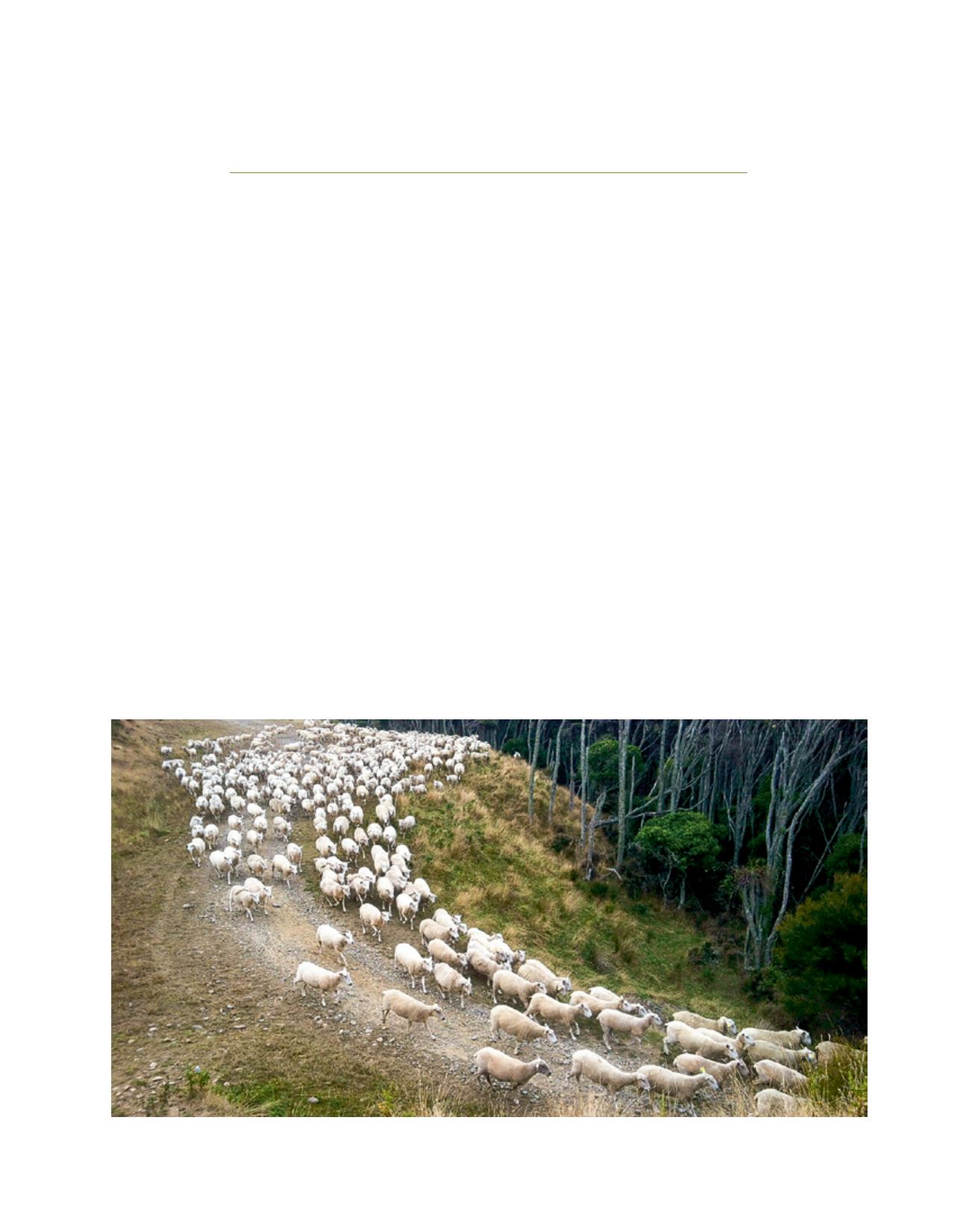

[
] 165
Family farming in New Zealand
Mark G. Ross, General Manager, Policy and Advocacy, Federated Farmers of New Zealand
F
amily farming in New Zealand has a proud history
that can be traced back to the first European
emigrants in the late 1840s. The country’s early
pioneers were important in the development of its
economy, often leaving their families behind in the United
Kingdom and other countries to make a new life in a
faraway land.
When the early settlers arrived on New Zealand’s shores
they often found out the hard way that the country’s climate
and terrain can be harsh at the best of times. The isolation,
landscapes and weather created many challenges to the first
farmers as they adapted to the new environment. Given this,
many of the early settlers were preserved by buying land,
clearing forests and establishing farms as a means to make
a living. The work was hard and the farming immigrants
had to be self-sufficient as there was no outside help from
a wider community. Many of the large sheep farms on the
eastern coasts were farmed by single men who could survive
the elements, and farming families were initially very sparse.
As time progressed and farms became more produc-
tive, family farms took on more importance. Men, women
and children all worked in unison to ensure that food was
produced to feed their families. Even small children had
their farm tasks like feeding hens or picking vegetables,
with men doing the hard farm labour such as ploughing and
shearing. Men also had to work off the farm to bring in addi-
tional income as there was often not enough money coming
off the land to support a growing family. In the nineteenth
century families often had six or more children, and it was
hard work to feed and clothe them all when relying only on
what was produced from the family farm.
At first the majority of the New Zealand farms were
focused on producing wool from sheep and milk from cattle.
It wasn’t until refrigerated ships were invented at the end
of the nineteenth century that the farmers could sell meat
and dairy products (like butter) overseas. The creation of
these new markets changed the family farming make-up as
it enabled surplus money to be made, thus allowing for the
purchase of machines like tractors. Work was not so hard
and people had time to develop communities and go to local
dances or play sports.
A golden period followed for the farming sector, with the
creation of large and buoyant communities throughout New
Image: Federated Farmers of New Zealand
Rounding up sheep on a coastal New Zealand farm
D
eep
R
oots
















